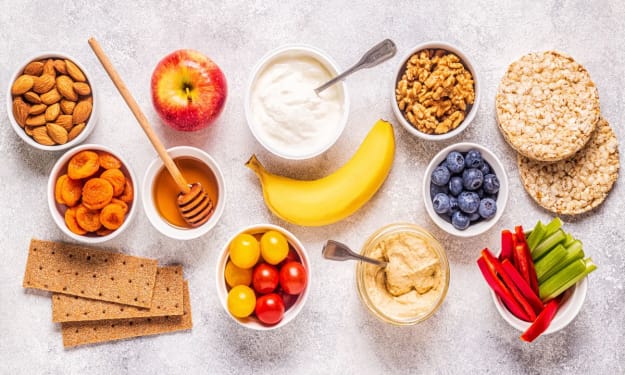Keto Diet 101: A Beginner's Guide to Understanding the Ketogenic Diet
Keto Diet 101

The ketogenic diet, commonly known as the keto diet, has gained popularity in recent years as a way to lose weight and improve overall health. The diet is based on the principle of consuming high amounts of healthy fats, moderate amounts of protein, and low amounts of carbohydrates. The idea behind this diet is to put the body into a state of ketosis, where it starts burning fat for energy instead of carbohydrates.
In this beginner's guide to understanding the ketogenic diet, we'll cover the basics of what the diet is, how it works, and what you can eat while on the diet.
What is the ketogenic diet?
The ketogenic diet is a low-carb, high-fat diet that is designed to put your body into a state of ketosis. Ketosis is a natural metabolic state that occurs when your body is low on carbohydrates and must rely on fat for energy. When your body is in ketosis, it breaks down fat into molecules called ketones, which are used for energy instead of glucose.
How does the ketogenic diet work?
The ketogenic diet works by limiting the amount of carbohydrates you eat and increasing the amount of healthy fats in your diet. When you consume fewer carbohydrates, your body turns to fat as its primary source of energy. As you continue to follow the diet, your body becomes better at burning fat and producing ketones.
What can you eat on the ketogenic diet?
The ketogenic diet is a high-fat, low-carb diet, which means that you'll be consuming plenty of healthy fats and cutting back on carbohydrates. Some of the foods you can eat on the ketogenic diet include:
Healthy fats: Avocado, nuts and seeds, coconut oil, olive oil, and grass-fed butter.
Protein: Meat, poultry, fish, and eggs.
Low-carb vegetables: Broccoli, spinach, kale, cauliflower, and zucchini.
Dairy: Cheese, cream, and high-fat yogurt.
Foods to avoid on the ketogenic diet include:
Grains: Bread, pasta, rice, and cereal.
Sugar: Soda, candy, and desserts.
Fruit: While some fruits are allowed on the ketogenic diet, they should be consumed in moderation due to their high sugar content.
What are the benefits of the ketogenic diet?
The ketogenic diet has been shown to have a variety of health benefits, including:
Weight loss: The ketogenic diet can be an effective way to lose weight, as it encourages the body to burn fat for energy.
Improved blood sugar control: The ketogenic diet can help improve blood sugar control, which is particularly beneficial for people with type 2 diabetes.
Reduced inflammation: The high-fat, low-carb nature of the ketogenic diet has been shown to reduce inflammation in the body.
Improved brain function: The ketogenic diet has been shown to improve cognitive function and reduce symptoms of neurological disorders like epilepsy.
What are the risks of the ketogenic diet?
While the ketogenic diet can be beneficial for many people, there are some risks to consider. These include:
Keto flu: When you first start the ketogenic diet, you may experience flu-like symptoms as your body adjusts to the new diet.
Nutrient deficiencies: Because the ketogenic diet limits the amount of fruits and vegetables you can eat, it can be difficult to get all the nutrients you need.
Digestive issues: The high-fat nature of the ketogenic diet can cause digestive issues like constipation and diarrhea.
Conclusion
The ketogenic diet is a high-fat, low-carb diet that is designed to put your body into a state of ketosis. While it can be a beneficial way to lose weight and improve overall health, it's important to be aware of the potential risks and to talk to your doctor before starting the diet. If you decide to try the ketogenic diet, be sure to focus on consuming healthy fats and plenty of low-carb vegetables,
About the Creator
Enjoyed the story? Support the Creator.
Subscribe for free to receive all their stories in your feed. You could also pledge your support or give them a one-off tip, letting them know you appreciate their work.






Comments
There are no comments for this story
Be the first to respond and start the conversation.